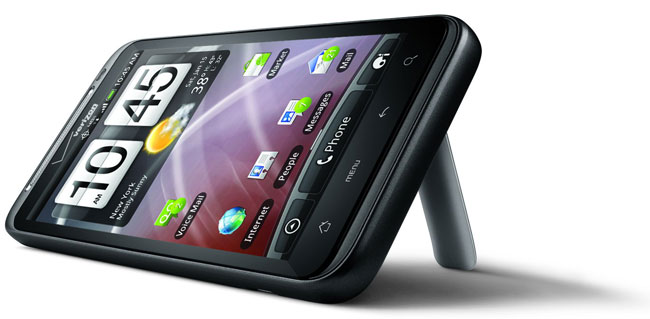
The HTC Thunderbolt, the first smartphone equipped with 4G LTE available through Verizon Wireless, will go on sale on Thursday, March 17 for the price of $199 with the signing of a two-year contract. Off-contract Thunderbolts will cost $669.99, according to online mobile phone retailer Wirefly.
Based on Google’s Android 2.2 operating system, the Thunderbolt sports a large 4.3-inch touchscreen, an 8-megapixel rear-facing camera with LED flash and a 1.3-megapixel front-facing camera for Skype-enabled video chats. It also features Dolby surround sound and HD video recording capabilities.
Inside, it has 8GB of built-in storage and 32 GB of additional storage on a microSD card. It’s powered by a custom single-core 1GHz Snapdragon processor.
While the Thunderbolt is a solid offering, the thing that makes it unique is its 4G LTE-compatibility. Verizon’s LTE network, the first of its kind in the US, can support speeds of between 6Mbps and 12Mbps — thought LTE is theoretically capable of speeds of up to 100Mbps.
Wirefly began to take pre-orders of the Thunderbolt at 3am EST Tuesday morning. Verizon has not yet confirmed the launch date of the device, which debuted at this year’s Consumer Electronics Show in January. But a Wirefly spokesman told Computerworld that Verizon has sent out paperwork to certified dealers to inform them of the March 17 launch date.
One thing Verizon customers looking to purchase a new phone may want to take into consideration: The Thunderbolt will be the first smartphone on Verizon to be able to support the use of both voice and data at the same time. (Think talking to someone while simultaneously looking up the location of a restaurant on Google maps .) Not even the iPhone 4 — which operates on Verizon’s 3G, rather than 4G, network — can do this.
Edit: Clarification made in the last sentence to say that simultaneous voice and data will not work on Verizon’s 3G network. The iPhone 4 can do both voice and data — when used on AT&T.

